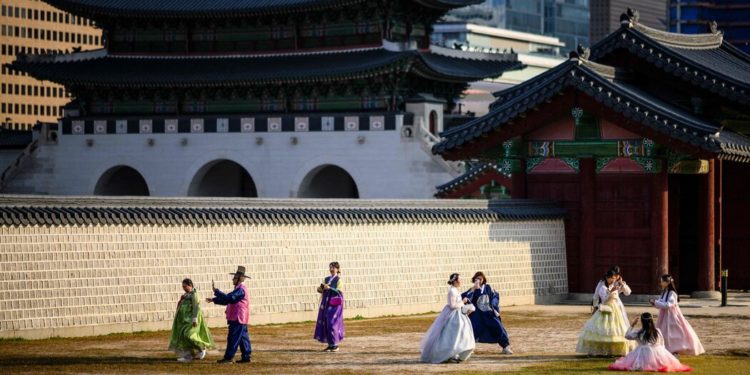By THE NEW YORK TIMES
The Gyeongbokgung Palace, a national treasure in the heart of South Korea’s capital that draws millions of visitors each year, was vandalized with graffiti twice over the weekend.
Parts of the 14th century palace were spray painted in red and blue on Saturday and Sunday nights, according to the police. The police said at least two people acted on Saturday, and at least one person did on Sunday. They have yet to identify the suspects from Saturday. One person handed themselves to police on Monday morning. Police have not determined a motive.
While graffiti is more common in alleyways and tunnels in South Korea, heritage sites are a rare target in the country, and have special protections under the law, with violators facing stiff prison sentences and fines.
The palace is one of the five grand palaces built during the Joseon Dynasty and boasts clay folklore statues, the king’s throne hall, and expansive roofs made from fired clay tiles in red, blue and green. It’s nestled at the foot of a major mountain, Bugaksan, among the modern office buildings of central Seoul. It was used by Gucci this year to host a fashion show.
The authorities were first alerted to vandalism at the palace at about 2 a.m. on Saturday. The words “free movie” in Korean and several website addresses were written with blue and red spray paint.
Two areas were targeted: the entrance to Yeongchu Gate, the palace’s western gate, and the side gate of the National Palace Museum. The total damage spread across 44 meters.
Government workers began cleaning off the graffiti the next day. Reports of a second spray-painting came in to police at about 10:30 p.m. on Sunday, this time in red and spanning three meters of the western gate. The words included the name of an artist and album in English. The police declined to say what those were.
Gyeongbokgung Palace, located in the heart of downtown and Seoul’s old capital district, was built in 1395 as the main palace of the Joseon Dynasty, the last dynastic era of Korea before the Korean empire and the first Japanese annexation. A large part of the palace is being restored.
Police said they believe the suspects from each night are different and that the second incident might have been a copycat.
At least 20 government workers are removing the graffiti, which officials say will take about a week. The damaged areas are covered with a tarp and the surrounding areas are closed off by fences.
The palace is protected under the Cultural Heritage Protection Act and anyone charged with vandalizing it could face up to five years in prison and a fine of up to $39,000.







Discussion about this post